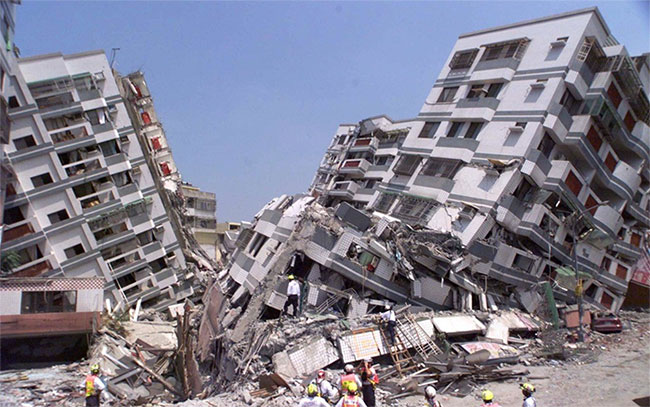Why did buildings collapse when the earthquake struck? The truth is more complicated than you think!
Earthquakes have always been a frightening natural phenomenon, and it becomes more dangerous as growing cities come with the risk of collapse of tall buildings.
Why do buildings collapse when earthquakes and how to prevent this?
If you've ever seen disaster movies, you might think that buildings collapse due to the direct cause the ground beneath them shakes violently or even splits apart. But that is not really the way they collapse because most buildings are not in the fault position and the movement of tectonic plates occurs much deeper than the foundations of buildings. In fact, the impact of earthquakes on buildings is much more complicated.

In fact, the impact of earthquakes on buildings is much more complicated.
So what is the real cause of buildings collapsing?
As the ground moves below the building, they send shockwaves through the rest of the structure and cause it to vibrate back and forth. The power of this oscillation depends on two main factors: the weight of the building (mainly concentrated on the roof) and its reliability (the main factor of the oscillation). Lower buildings are usually stronger, while taller buildings are more flexible.
So people think that the solution to collapse is to build lower buildings so that they deform as little as possible.
But the 1985 earthquake in Mexico is a good example that is not entirely true. During the earthquake, many buildings from 6 to 15 floors collapsed. The strange thing is that the nearby lower 6-storey buildings still stand and the taller 15-storey buildings are hardly affected, while the medium-sized buildings are shaking more violently and collapsed.
What happened in Mexico is an effect called resonance, when the frequency of earthquake waves occurs along with the natural frequency of mid-range buildings. Like the same beat for a swing. Each seismic wave will amplify the shaking of the building and become stronger and eventually exceed the limit that the building can withstand causing collapse.

Low frequency oscillation will cause much damage to tall and flexible buildings.
Today, engineers work with geologists and seismologists to predict the frequency of earthquakes at construction sites to prevent resonance collapse, based on factors such as soil type or data of previous earthquakes. Low-frequency oscillation will cause more damage to taller and more flexible buildings while high-frequency oscillation will endanger low and solid structures.
Engineers have also devised ways to absorb shakes to limit distortion by using new new technology.
- Based on the flexibility to isolate the vibrations of the background compared to the rest of the building.
- Based on the phase difference oscillation to regulate the resonance with natural frequencies to reduce shakes.
- The 6-degree earthquake caused a collapse in Indonesia, at least three people died
- The earthquake pulled down the presidential palace
- Tokyo shakes because of the earthquake
- The best 'place' to feel an earthquake?
- 2 people died, 200 were injured after the quake shook Taiwan
- The magnitude 7.2 earthquake shook Japan
- Indonesia earthquake shook Vietnam buildings
- The earthquake shook in Tokyo
- Taiwan is shaken by an earthquake of 6 degrees
- Indonesia earthquake strong, at least 18 people died
- How did NASA find anti-earthquake technology for buildings?
- The earthquake of 7.2 degrees shook the Mexican capital
 'Fine laughs' - Scary and painful torture in ancient times
'Fine laughs' - Scary and painful torture in ancient times The sequence of numbers 142857 of the Egyptian pyramids is known as the strangest number in the world - Why?
The sequence of numbers 142857 of the Egyptian pyramids is known as the strangest number in the world - Why? History of the iron
History of the iron What is alum?
What is alum?